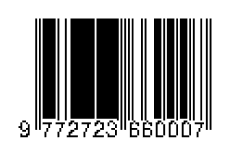Analysis Customer Satisfaction of Repurchase Intention in Gold Purchase Field for Investment During Pandemic COVID-19
DOI:
https://doi.org/10.59141/jiss.v3i08.686Keywords:
customer satisfaction, product, service, price, repeat purchaseAbstract
The whole world is hit by the respiratory and airborne disease, or COVID-19 outbreak. The beginning of the COVID-19 pandemic began in Wuhan, China in December 2019. This study aims to analyze a person's satisfaction in repurchasing eman which can be used as an investment during the pandemic. By analyzing buyer satisfaction, products, services, and repurchase prices in purchasing gold for investment during the pandemic. The research technique used is a quantitative technique, carried out by distributing questionnaires to 110 gold buying and selling actors who have made gold buying and selling transactions from one time during the pandemic. The research was conducted using the Structural Equation Modeling (SEM) method with the Partial Least Square (PLS) alternative with the Smart-PLS 3.3.3 program. The results obtained indicate that there are: (1) There is a significant relationship and influence on consumer satisfaction with repurchase (Repurchase Intention) (2) While Product, Service, and Price Interest on Repurchase Intention is not significant
References
Adams, P., Freitas, I. M. B., & Fontana, R. (2019). Strategic orientation, innovation performance and the moderating influence of marketing management. Journal of Business Research, 9(7), 129–140. https://doi.org/https://doi.org/10.1016/j.jbusres.2018.12.071
Almohaimmeed, B. M. (2019). Internal service quality and external service quality using two versions of SERVQUAL scale: An empirical evidence from five malls in the capital city of Saudi Arabia. Business: Theory and Practice, 2(2), 158–169. https://doi.org/https://doi.org/10.3846/btp.2019.15
Anderson, B. S., Wennberg, K., & McMullen, J. S. (2019). Enhancing quantitative theory-testing entrepreneurship research. Journal of Business Venturing, 3(5), 105928. https://doi.org/https://doi.org/10.1016/j.jbusvent.2019.02.001
Arendt, R., Bach, V., & Finkbeiner, M. (2022). The global environmental costs of mining and processing abiotic raw materials and their geographic distribution. Journal of Cleaner Production, 132232. https://doi.org/https://doi.org/10.1016/j.jclepro.2022.132232
Bahri, B. (2018). Keputusan Pembelian dan Kepuasan Konsumen Dipengaruhi Variabel Lokasi, Pelayanan, Kualitas Produk, Nilai Emosional, dan Disain Interior yang Berdampak pada Tingkat Pembelian. Jurnal Maksipreneur: Manajemen, Koperasi, Dan Entrepreneurship, 8(1), 60–80. https://doi.org/http://dx.doi.org/10.30588/jmp.v8i1.388
Balbi, S., Misuraca, M., & Scepi, G. (2018). Combining different evaluation systems on social media for measuring user satisfaction. Information Processing & Management, 5(4), 674–685. https://doi.org/https://doi.org/10.1016/j.ipm.2018.04.009
Cheah, J.-H., Ting, H., Cham, T. H., & Memon, M. A. (2019). The effect of selfie promotion and celebrity endorsed advertisement on decision-making processes: A model comparison. Internet Research, 2(3), 552–577. https://doi.org/https://doi.org/10.1108/IntR-12-2017-0530
Chou, S.-F., Horng, J.-S., Liu, C.-H. S., & Lin, J.-Y. (2020). Identifying the critical factors of customer behavior: An integration perspective of marketing strategy and components of attitudes. Journal of Retailing and Consumer Services, 5(5), 102113. https://doi.org/https://doi.org/10.1016/j.jretconser.2020.102113
Ebert, J. F., Huibers, L., Christensen, B., & Christensen, M. B. (2018). or web-based questionnaire invitations as a method for data collection: cross-sectional comparative study of differences in response rate, completeness of data, and financial cost. Journal of Medical Internet Research, 2(1), e8353.
Huang, M.-H., & Rust, R. T. (2022). A framework for collaborative artificial intelligence in marketing. Journal of Retailing, 8(2), 209–223. https://doi.org/https://doi.org/10.1016/j.jretai.2021.03.001
Mustofa, M. A., Limakrisna, N., & Muharam, H. (2022). Effect of Logistic Support on Marketing Performance for Competitive Advantage. Journal Research of Social, Science, Economics, and Management, 1(11), 1974–1985. https://doi.org/https://doi.org/10.36418/jrssem.v1i2.8
Park, S., Hahn, S., Lee, T., & Jun, M. (2018). Two factor model of consumer satisfaction: International tourism research. Tourism Management, 6(7), 82–88.
Pinto, C. C., Calazans, G. M., & Oliveira, S. C. (2019). Assessment of spatial variations in the surface water quality of the Velhas River Basin, Brazil, using multivariate statistical analysis and nonparametric statistics. Environmental Monitoring and Assessment, 9(3), 1–13.
Rėklaitis, K., & Pilelienė, L. (2019). Principle differences between B2B and B2C marketing communication processes. Organizacijø Vadyba: Sisteminiai Tyrimai, 2(8), 73–86. https://doi.org/10.1515/mosr-2019-0005
Seber, V. (2019). The Effect of Interaction Via Social Media and Past Online Shopping Experience on Repurchase Intention Through Trust in Tokopedia Application Users in Surabaya. Warmadewa Management and Business Journal (WMBJ), 1(2), 71–92. https://doi.org/https://doi.org/10.22225/wmbj.1.2.2019.71-92
Syafril, S., & Hadziq, M. F. (2021). Islamic Principles in Marketing: An Overview of Islamic Marketing mix in Social-Media Campaign. El-Qish: Journal of Islamic Economics, 1(1), 69–82.
Tandon, A., Aakash, A., & Aggarwal, A. G. (2020). Impact of EWOM, website quality, and product satisfaction on customer satisfaction and repurchase intention: moderating role of shipping and handling. International Journal of System Assurance Engineering and Management, 8(2), 349–356.
Varadarajan, R. (2020). Customer information resources advantage, marketing strategy and business performance: A market resources based view. Industrial Marketing Management, 8(9), 89–97. https://doi.org/https://doi.org/10.1016/j.indmarman.2020.03.003
Zak, S., & Hasprova, M. (2020). The role of influencers in the consumer decision-making process. SHS Web of Conferences, 4, 3014. https://doi.org/https://doi.org/10.1051/shsconf/20207403014
Downloads
Published
How to Cite
Issue
Section
License
Copyright (c) 2022 Diandra Ariani Syafitri

This work is licensed under a Creative Commons Attribution-ShareAlike 4.0 International License.
Authors who publish with this journal agree to the following terms:
- Authors retain copyright and grant the journal right of first publication with the work simultaneously licensed under a Creative Commons Attribution-ShareAlike 4.0 International. that allows others to share the work with an acknowledgement of the work's authorship and initial publication in this journal.
- Authors are able to enter into separate, additional contractual arrangements for the non-exclusive distribution of the journal's published version of the work (e.g., post it to an institutional repository or publish it in a book), with an acknowledgement of its initial publication in this journal.
- Authors are permitted and encouraged to post their work online (e.g., in institutional repositories or on their website) prior to and during the submission process, as it can lead to productive exchanges, as well as earlier and greater citation of published work.















